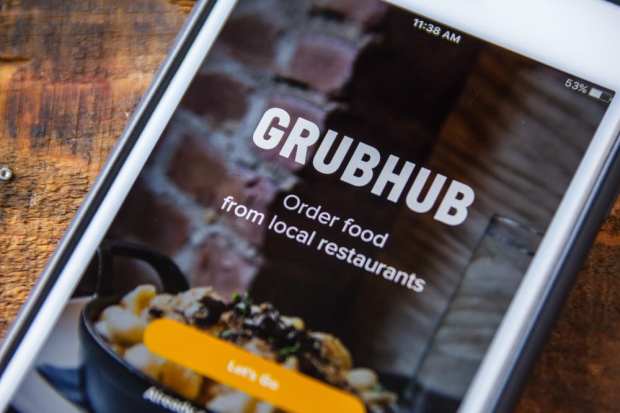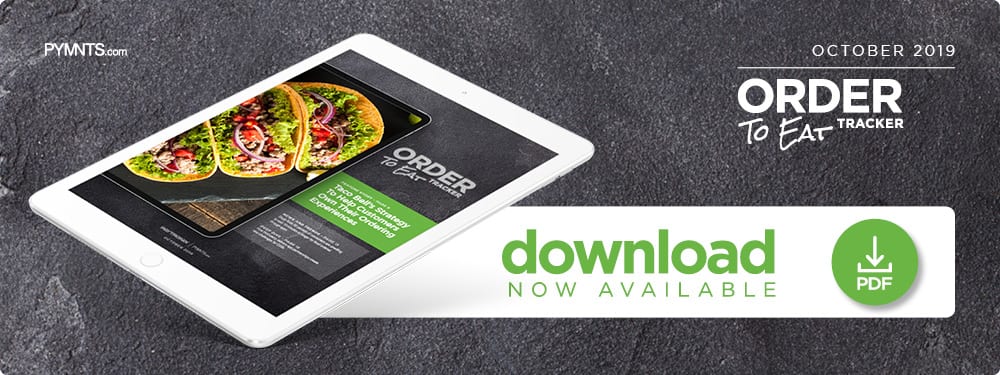Deep Dive: Third-Party Delivery Apps Face Growth Challenges

Third-party delivery apps such as DoorDash, Grubhub and Uber Eats are in high demand as customers seek to enjoy meals from their favorite fast-food restaurants and quick-service restaurant (QSR) brands. Many restaurants work with such delivery services to more easily reach their consumer bases, but these partnerships can present their own issues, such as high-order volumes. The following Deep Dive highlights the benefits and challenges that restaurants and QSRs face when using third-party delivery services.
Delivery rushes can overwhelm restaurants and quick-service restaurants (QSRs), but accepting food delivery orders online via third-party applications can provide critical relief. Such apps are becoming essential for restaurants as they serve customers who are now spending more on prepared food and deliveries than they are on groceries.
Home delivery is expected to grow about 6.5 percent per year by 2023 as consumers become more familiar with online and mobile ordering. Delivery customers also expect their food to arrive as soon as possible, and many restaurants are partnering with third-party delivery applications such as DoorDash or Grubhub to offer the convenience customers seek. Despite these services’ benefits, partnering with them does not eliminate all of the problems restaurants face, and such collaborations can create challenges of their own.
Restaurants using third-party delivery apps must balance concerns such as delivery speed and customer satisfaction with significant boosts in order volumes that such apps usually create. These restaurants must consider higher food and labor costs as well as an increasing number of regulations. Growing competition among third-party apps themselves can also affect customer retention: DoorDash, Grubhub and Uber Eats are all fighting for the same customer bases. These consumers are increasingly inclined to relate the quality of their delivery or dining experiences to these apps, too, making it crucial that restaurants partner with the right third-party platforms.
Delivery Challenges And Innovations
Online ordering and deliveries no longer represent a small segment of the restaurant experience, as 63 percent of all restaurant traffic now occurs off-premises. This means a growing number of consumers’ first experiences with restaurants are enabled through mobile apps.
Third-party apps are responsible for a significant portion of this. Spending on apps like Grubhub has increased 200 percent per year in Atlanta alone, with millennial consumers leading the charge. Partnering with third-party apps thus comes with clear benefits for restaurants, but these shifts also come with drawbacks.
Restaurants must consider costs when choosing third-party delivery partners, as apps can charge fees between 20 percent and 30 percent. Such costs can take sizable chunks out of restaurants’ profitable earnings, especially those of smaller eateries that do not have the option of hiring their own delivery drivers due to budget constraints.
Larger restaurants and chains are responding to this challenge in different ways. Fast food brand Jimmy Johns is rejecting third-party delivery entirely and is instead relying on its own drivers, while Panera Bread has come up with a hybrid approach. The latter’s customers can order its food through third-party apps, but the chain’s own drivers items will deliver the items.
Restaurants of all sizes must deal with other challenges, too, including the sheer volume of orders enabled through third-party apps. This can overwhelm restaurants’ kitchens, forcing them to spend equal amounts of time and energy fulfilling orders for both in-house and home-delivery customers. Some owners describe the experience as running two separate businesses simultaneously.
These partnerships can also cause restaurants to see reductions in brand awareness, as customers are interacting only with third-party branding. This can be detrimental to new restaurants attempting to grow their consumer bases and cause problems if third-party services offer subpar experiences.
Customers expect to receive their food as quickly as possible, but third-party apps can take as long as 45 minutes to deliver a single order. These extended time periods can result in food deliveries that are either too cold or too warm, which may contribute to less-than-ideal customer experiences. Customers are nevertheless more likely to order through third-party apps when it comes time to deliver, however, meaning that these services are likely to have a larger stake in the market over the next few years.
Third-Party Competition And Its Effect On The Restaurant World
The third-party delivery space is growing rapidly. Both Grubhub and Uber Eats reported earnings of more than $5 billion in 2018, with the latter looking to grow its food delivery revenue to $10 billion this year. Such growth means new challenges for the restaurants that are partnering with these services, however.
These restaurants must consider which apps will see continued success and which the competition will outpace. The prevalence of third-party apps is pushing more chains and QSRs to consider ghost restaurants, which do not have dine-in locations and instead solely offer deliveries.
Virtual restaurants are slowly but steadily growing, speaking to the ease with which customers order through mobile delivery apps. Third-parties will continue to play a large role in the space in the future, but restaurants may need to think about how they approach these partnerships to stay competitive.

